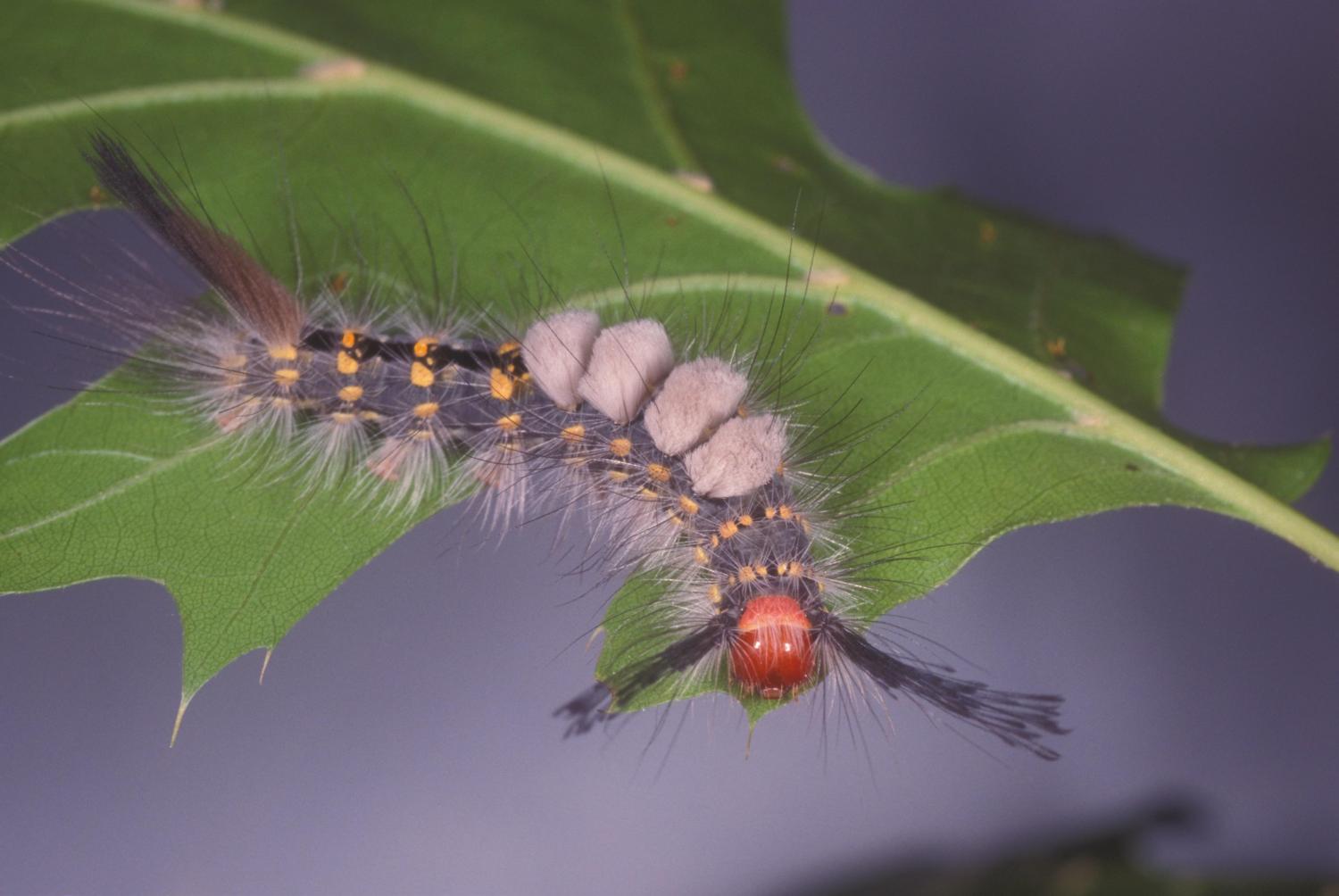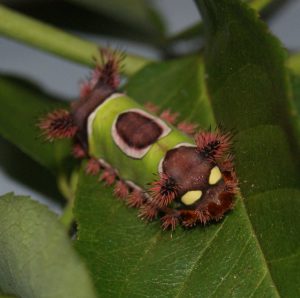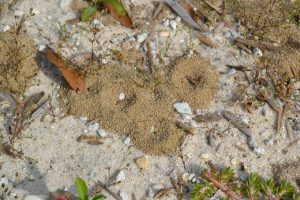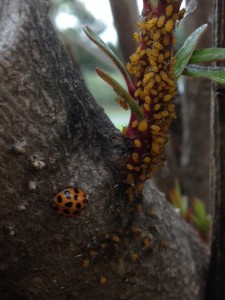
by Larry Williams | Oct 26, 2016

Saddleback Caterpillar – Image Credit Matthew Orwat
The reality of what happens deep down in the darkness of a fire ant mound hidden to human eyes or in the tunnels of a mole cricket where only creepy crawly things dare to enter may be too scary to believe.
University of Florida Institute of Food and Agricultural Sciences along with USDA introduced a tiny South American fly to the U.S. to help control the pesky imported fire ant. Literally, these introduced phorid flies cause the imported fire ants’ heads to fall off. They then use the decapitated heads to reproduce. The flies hover above the ants, dive in, latch on to the ant’s body and inject their eggs. The egg hatches, and a maggot wiggles its way into the ant’s head, where it grows for two to three weeks before secreting a chemical that dissolves the membranes holding the ant’s body together. In a few hours the ant’s head falls off. The maggot eats everything in it and then uses it as a pupae case. Gruesome, isn’t it?
Assassin bugs are frequently seen slowly crawling on shrubs in our landscapes. Most are brown to black but many are brightly colored. A common species is reddish-orange in the nymph stage. Assassin bugs feed on many harmful insects. Caterpillars are their favorite food.
They digest their prey before eating it. They do this by piercing their victim with their sharp beak, injecting digestive enzymes. This causes chaos on the unfortunate insect’s nervous system and liquefies the internal organs. The liquefied contents are then consumed, leaving only the shell of its kill. How tragic.
The larra wasp, an introduced predatory insect by University of Florida entomologists, enters a mole cricket tunnel. The female wasp will pounce on the mole cricket, wrestle with it and sting it on its soft underside. This immobilizes the mole cricket long enough to allow the wasp to deposit a single egg on its underside. The mole cricket recovers and burrows back into the ground. The wasp larva eventually hatches and slowly eats the mole cricket alive. Poor mole cricket.
We mere mortals should be aware of these horrifying happenings occurring in our own backyards. And we should be frightened by those people who attempt to kill every six-legged critter in sight because they have wrongly identified them as bad. In reality, less than one percent of all insects that exist are damaging to our plants. Most are of no consequence to our lawns, landscapes or gardens. And many are beneficial.
These beneficial insects are helping us gardeners battle the bad bugs during Halloween and year round.
by Beth Bolles | May 5, 2016
Believe it or not, there is a beneficial ant that is found in many landscapes. If you see an interesting mound shaped like a small volcano, you likely have the pyramid ants. These ants form small nests in sandy soils and the mound will have a small opening in the very center.

Pyramid ant mound, about 5 inches across. Photo by Beth Bolles
Pyramid ants are not aggressive and do not sting. They are fast moving over the ground building the mound and searching for food. Ants will collect honeydew from other insects and the beneficial part is that ants hunt live insects including winged fire ants. By allowing the pyramid ants to remain in parts of your landscape, you may reduce the numbers of fire ants that can establish in that area.
When you see the distinctive pyramid ant mounds, remember the beneficial role they play in keeping pest species in check. Keep any baits away from these areas to protect the pyramid ants.

A group of small mounds. Photo by Beth Bolles

by Julie McConnell | May 27, 2014

Lady bird beetle and aphids. Photo: Julie McConnell, UF/IFAS
The most numerous animals on the planet are insects and although less than 1% cause damage to our landscapes, most are viewed as pests. Many insects perform clean up tasks that keep our environment from being littered with carcasses and trash while others actually attack and feed upon insects that are direct pests to plants.
It is important to recognize that all insects are not pests and take the time to get to know a few that might actually be performing a beneficial job in your landscape. Probably the most easily recognized beneficial bug family in Florida landscapes are the ladybird beetles (Coccinellidae). There are several species of ladybird beetles with different food preferences including mildews, mites, whiteflies, scale insects, and aphids.
Another group of insects that include some predatory species is the stink bugs. Some stink bugs do eat plants, but there are also many that are beneficial such as Florida predatory stink bug (Euthyrhynchus floridanus). The Florida predatory stink bug preys on velvetbean caterpillar, okra caterpillar, alfalfa weevil, and flatid planthopper. One of the distinguishable characteristics between plant feeding and insect feeding stinkbugs are the shape of their shoulders. Plant feeders have rounded shoulders and predatory have points on their shoulders.
The next time you are disturbed by a bug in your garden, take a moment to watch what it is eating and try to identify it before assuming it is a pest. After all, there are many beneficial bugs that help to balance out the “bad bugs.”






